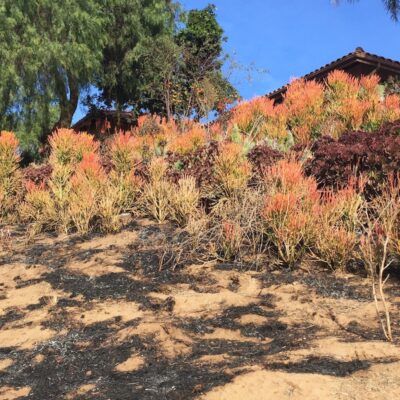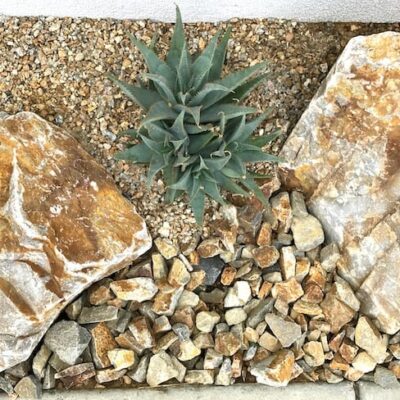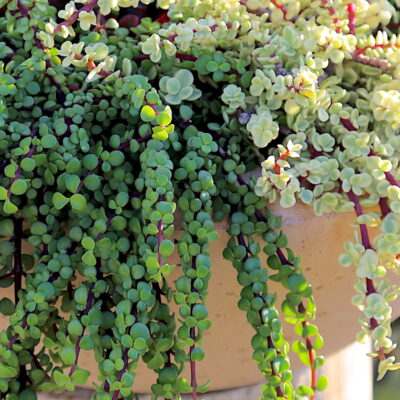The information on this page has been excerpted and used by fire protection agencies as far away as South Africa and Australia. You're welcome to do so, too---all I ask is credit and, if possible, a link to this page.
Disclaimer: Growing succulents does NOT guarantee a house won’t burn during a wildfire. Homeowners have told me they had a lot of succulents and, sadly, their homes burned regardless. What often happens is wind-driven embers became lodged under eaves.
According to Cal Fire, "a wildfire-front passes within 10 to 15 minutes."
So, expect a wind-driven wildfire to take 10 to 15 minutes to pass through your property. What catches fire during that time will burn until extinguished or reduced to ashes.
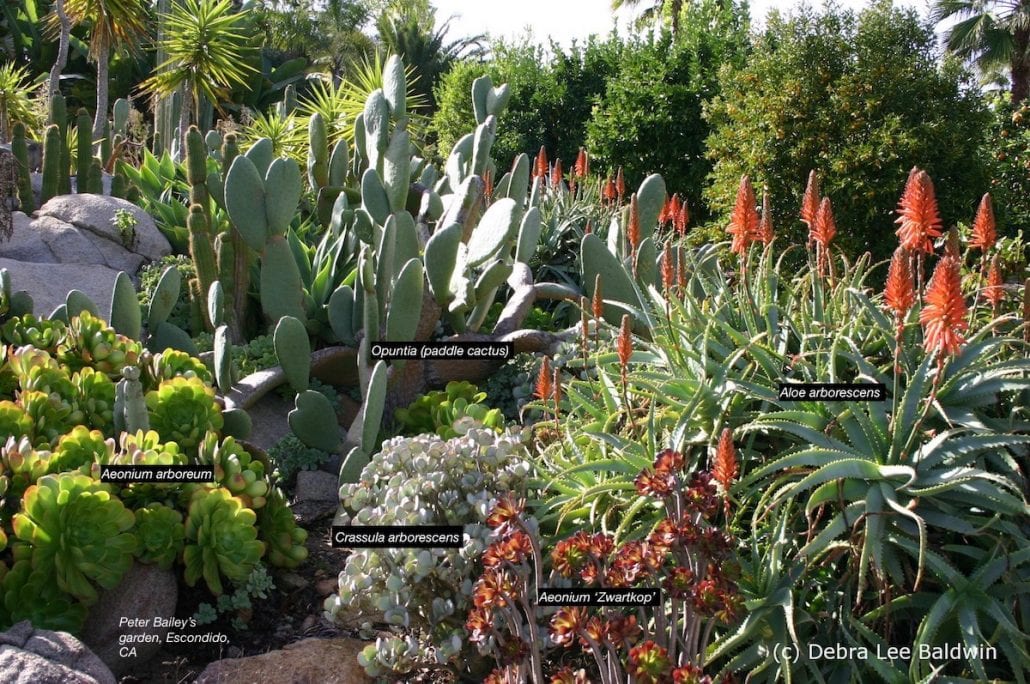
Readily available succulents serve as a low-water, fire-retardant landscape. This garden NE of San Diego was started entirely from cuttings.
My top firewise succulents
All of these are quite common and start easily from cuttings. They have thick, juicy leaves and grow readily in southern and coastal CA from the Bay Area south. If you live in a fire-prone, backcountry area, use them to create a firebreak that's ideally 15 feet or more wide.
Click on the headers to see more examples of each.
Aloes
Colony-forming Aloe arborescens (photo above, upper right) is the succulent credited with saving the home of Rob and Suzy Schaefer during the devastating wildfires of 2007. This common aloe produces orange-red, torchlike flower spikes in midwinter.
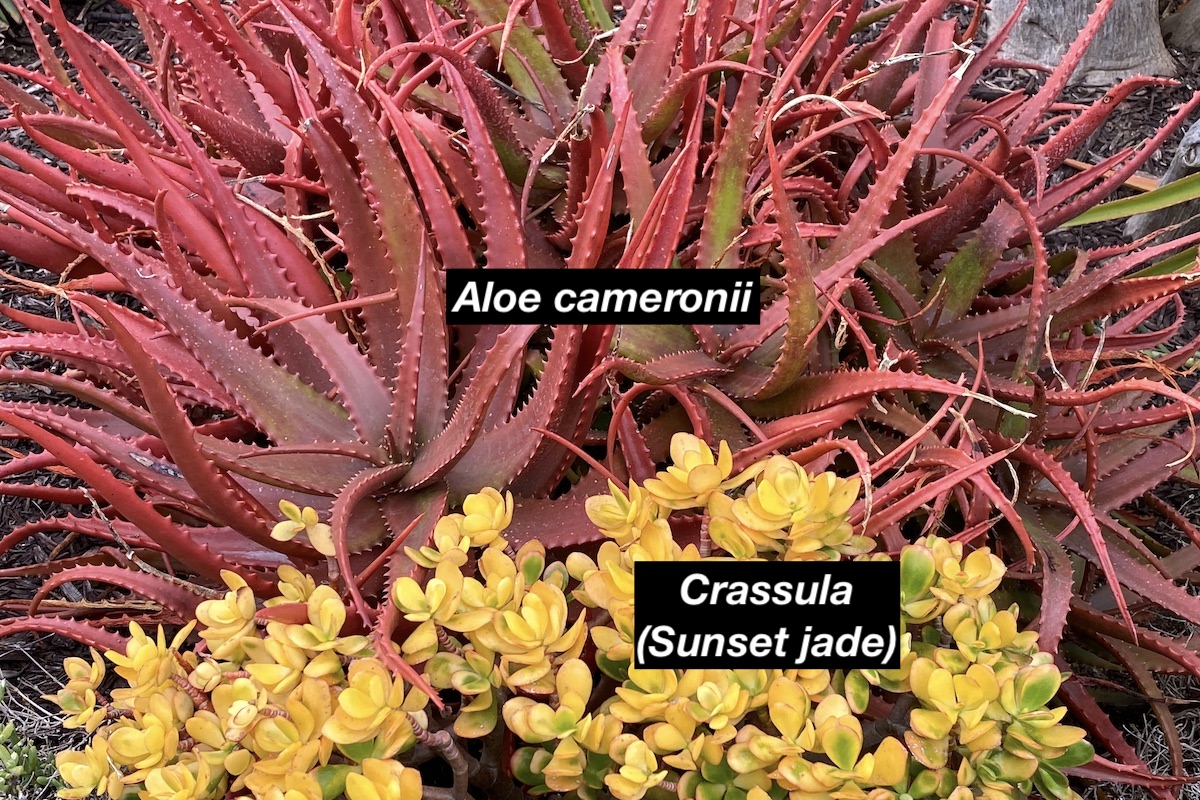
Colorful aloes include Aloe cameronii shown here with golden jade
Aeoniums
There are numerous varieties of these rosette succulents, some of which attain 2 feet in diameter. The best ones for fire resistance are multi-branching shrubs rather than those with single stems. All grow well in pots or in the ground.
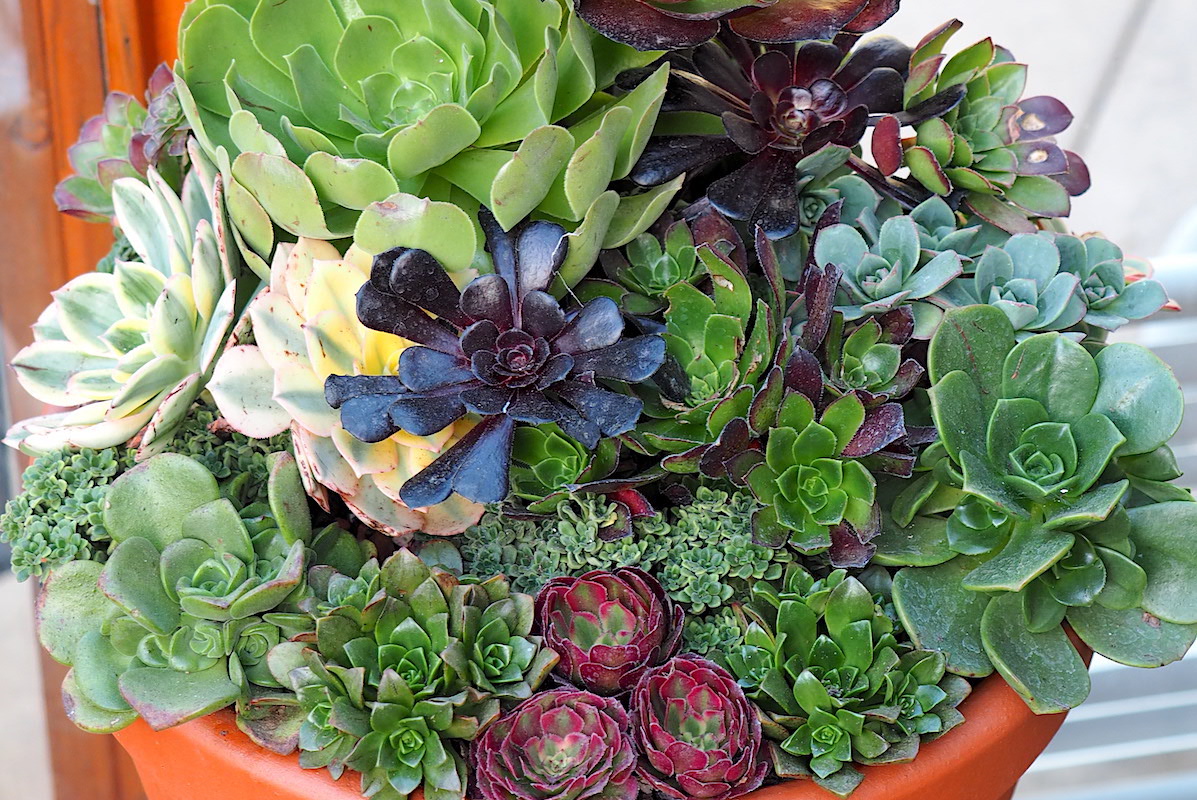
A potted arrangement of 10 different varieties of aeoniums.
Crassulas
Jade (Crassula ovata) didn't burn during the wildfire that threatened the Schaefer home; rather, it cooked. Like nearby aloes, its leaves turned putty-colored and collapsed. See photos.
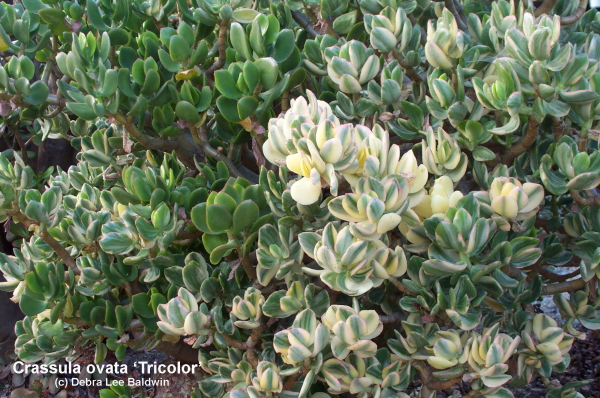
Crassula ovata 'Tricolor' (Tricolor jade)
If you think jade is boring, you may not be aware of its many cultivars. Some are striped cream-and-green; turn yellow-orange-red when grown in full sun; have silvery-gray leaves rimmed with red; or have intriguing tubular or wavy leaves. See them on this site's Crassula page.
Agaves
Like aloes, the best agaves for firebreaks are large---to 5 feet or more in height and diameter. Among these are Agave americana, Agave franzosinii, Agave guiengola, Agave weberi, Agave ferox, Agave vilmoriniana and cultivars of those species.

The wildfire that destroyed this house scorched an octopus agave (Agave vilmoriniana) in the front yard.
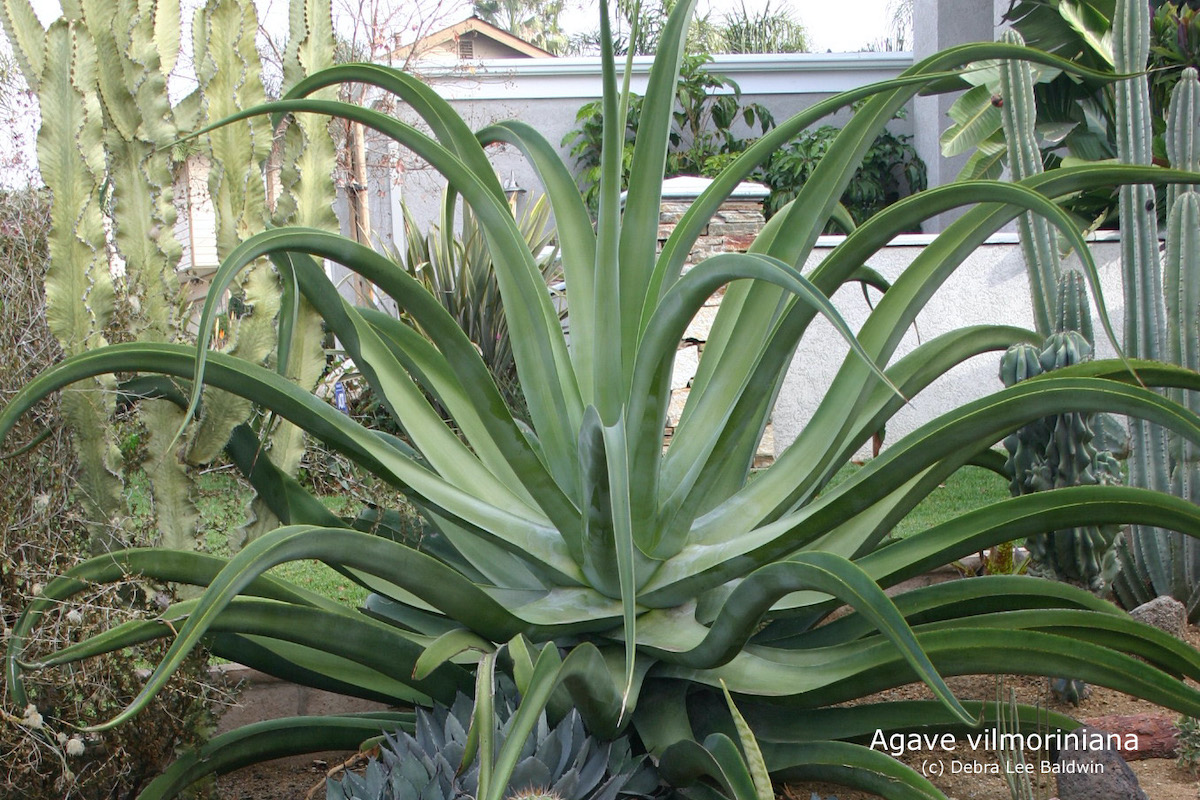
Agave vilmoriniana. At left behind it is Euphorbia ammak 'Variegata'.
Euphorbias
Upright, shrubby and treelike euphorbias from South Africa make excellent fire-barrier plants. Downsides to euphorbias are being frost tender and having caustic sap.
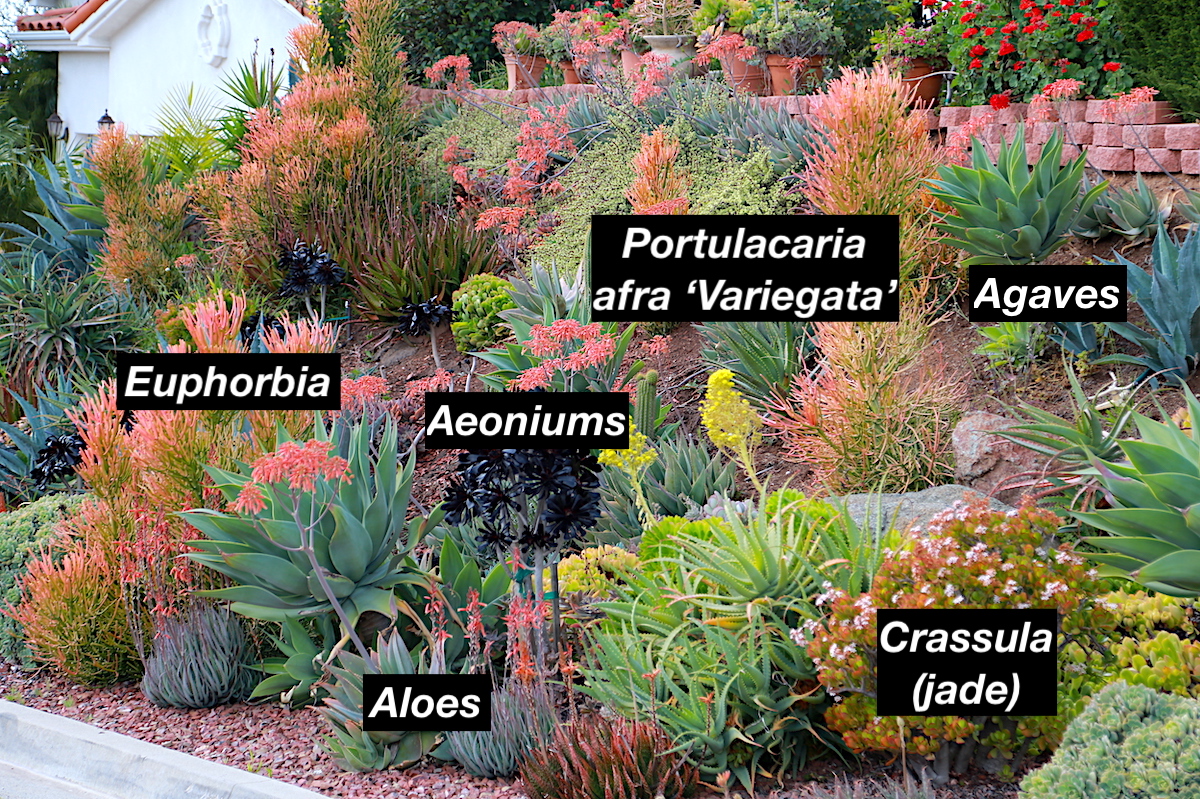
Fire-retardent slope planted with colorful succulents, including orange Euphorbia tirucalli 'Sticks on Fire'.
Highly ornamental, ironically-named Euphorbia tirucalli 'Sticks on Fire' attains 7 feet in height and several feet in diameter. See my video on how to prune it.
Opuntia (paddle cactus)
The thicker the succulent the better, when it comes to fire-retardancy. If you wince at the thought of having cacti in your garden, good news: There are spineless and near-spineless varieties.

Spineless opuntia cactus
Portulacaria afra (elephant food)
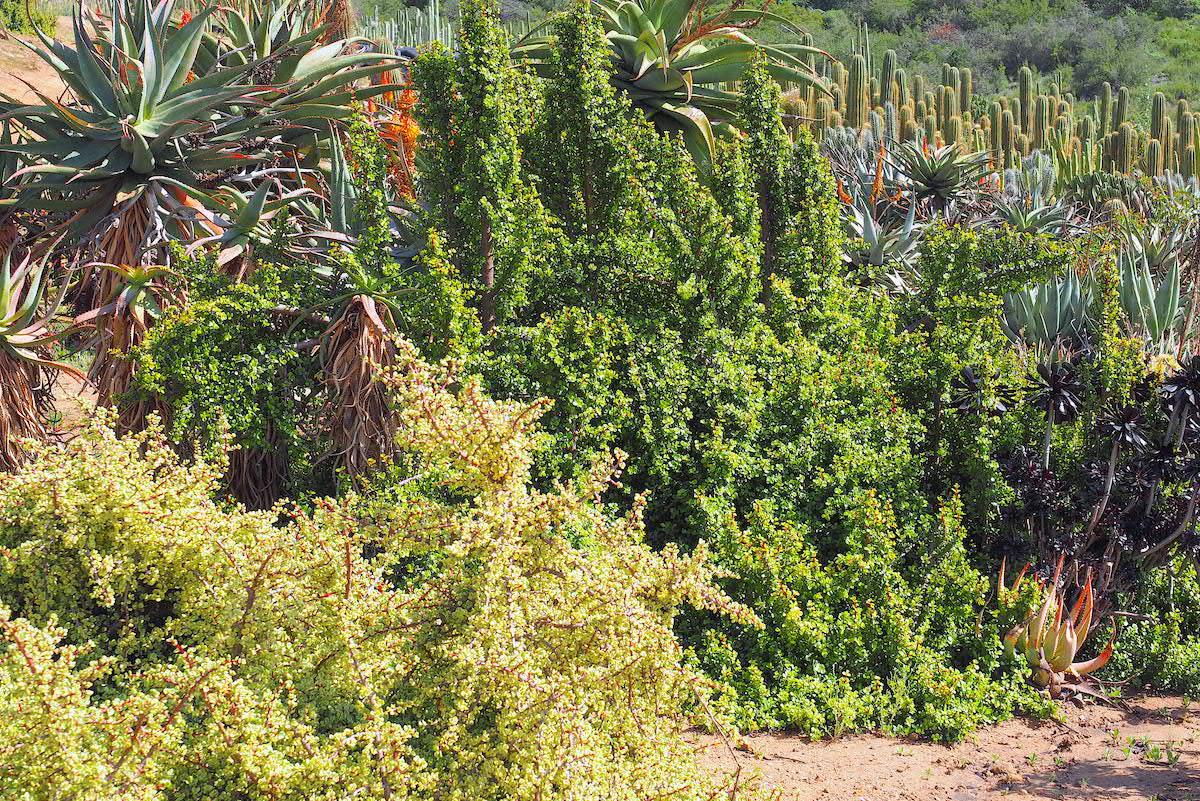
Portulacaria afra in ground
This plant is shrub-like, and yes, elephants really do eat it in South Africa. The variegated variety is less vigorous and more ornamental than the common green species.
Related videos on my channel
Related Info on this site
Did Succulents Protect These Homes from Wildfires?
Southern CA homeowners in Rancho Santa Fe and Bonsall say succulents protected their homes during two different wildfires. In each case, nearby homes burned to the ground.
Why You Really Need Rocks
Smart designers cover bare soil with rocks in succulent gardens that are as sophisticated and good-looking as they are practical.
Portulacaria afra (Elephant Bush): Photos, Varieties, Cultivation, Uses
Portulacaria afra: Uses, Photos and Varieties Native to South Africa, elephant bush thrives outdoors in warm, sunny climates such as CA, Arizona, Florida and Hawaii See All Succulent Types Aeonium Agaves Aloes Cactus Crassula Echeveria Euphorbias Ice Plants Kalanchoe Portulacaria Senecio About Portulacaria afra Portulacaria afra (elephant’s food, elephant bush, spekboom) thrives in warm, sunny climates.…
Resources
Videos
Do Succulents Burn? (6 min.) We try to catch a variety of succulents on fire with surprising results.
Succulents as Firebreak (4:32) Filmed five days after Camille Newton's garden "saved" her house from wildfire.
"Saved by Succulents" (4:56) From San Diego's CBS News, how succulents served as a wildfire barrier during the 2017 Lilac Fire.
Articles
From my Los Angeles Times article, "Did Succulents Save Her Home?" ~ "During last month’s wildfires, succulents apparently stopped a blaze in its tracks..." [Read more]
Books
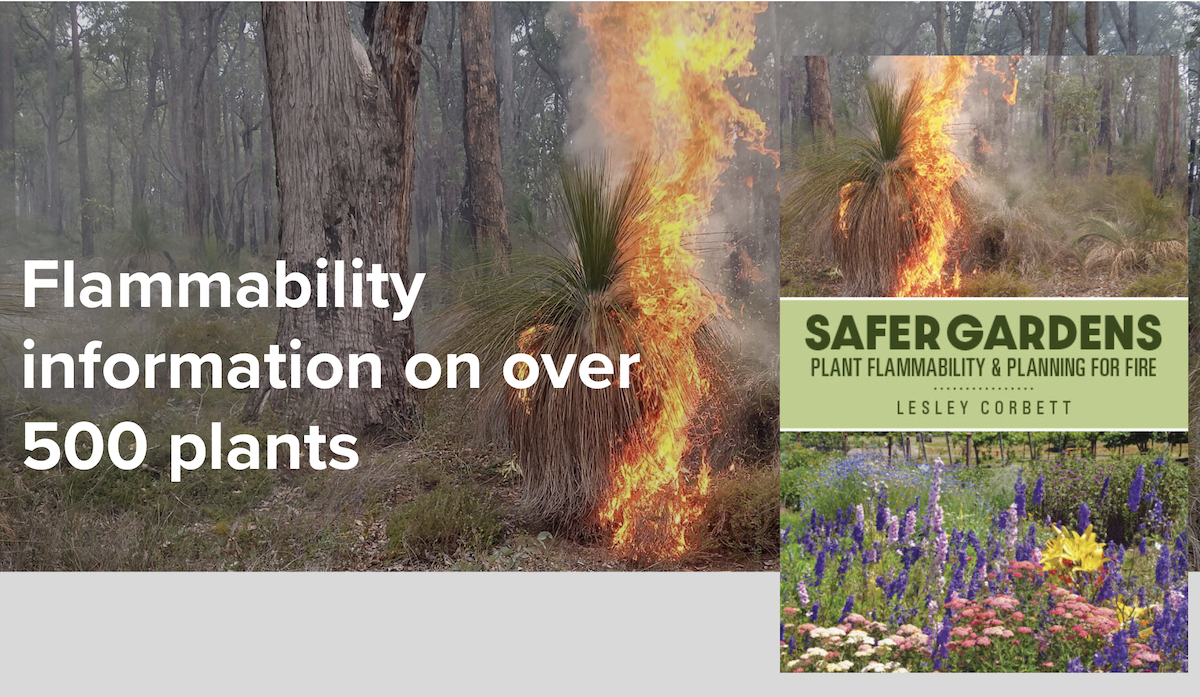
Lesley Corbett, an Australian horticulturist and author, has done a remarkable job of compiling flammability ratings on 500+ ornamental plants. For years she consulted "fire retardant" lists when choosing garden plants, only to learn much later that some are highly flammable. That lit a fire under her (sorry) to research plant flammability from reputable sources worldwide, including forestry services. Her new Safer Gardens book is the result.

